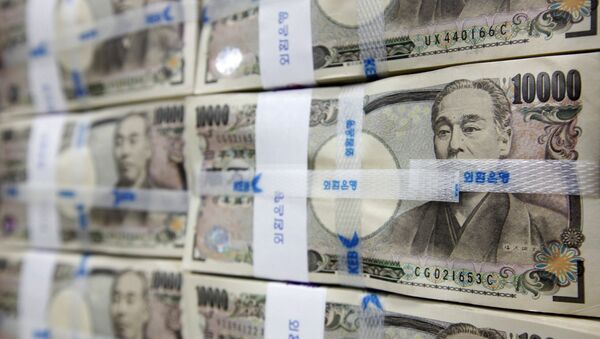"At the Monetary Policy Meeting held today, the Policy Board of the Bank of Japan decided to introduce ‘Quantitative and Qualitative Monetary Easing (QQE) with a Negative Interest Rate’ in order to achieve the price stability target of 2 percent at the earliest possible time," the bank said in a Friday statement.
According to the statement, the Bank of Japan will pursue monetary easing through various measures and may cut the interest rate further in the future.
"The Bank will apply a negative interest rate of minus 0.1 percent to current accounts that financial institutions hold at the Bank. It will cut the interest rate further into negative territory if judged as necessary," the Friday statement said.
The decision to introduce the negative 0.1 percent interest rate was approved by a 5 to 4 majority vote.
The negative interest rate will be effective starting from February 16, 2016, according to the Bank of Japan.
The bank said it made no changes to its government bond purchases and plans to continue buying exchange-traded funds (ETFs) with the aim of increasing the monetary base at an annual pace of 80 trillion yen (about $670 billion).
The move comes amid Japanese Prime Minister Shinzo Abe’s plan to overcome deflation and revive the economy.



